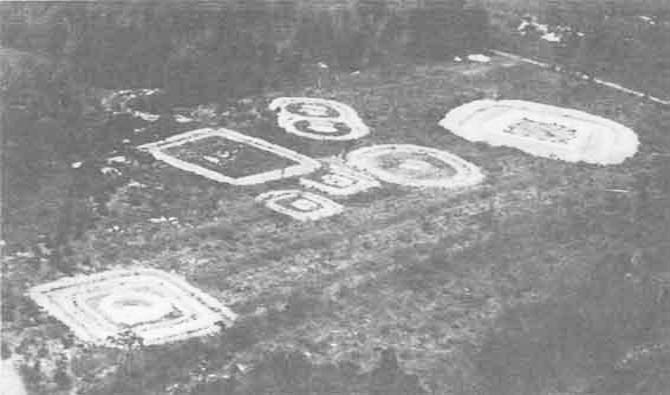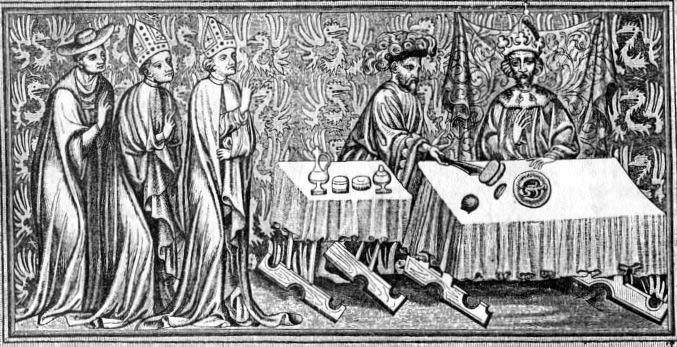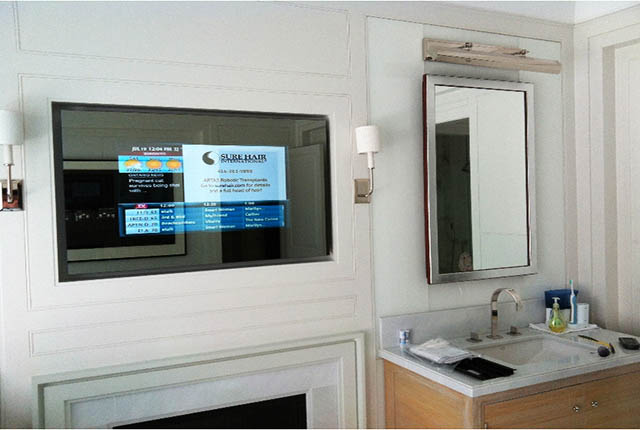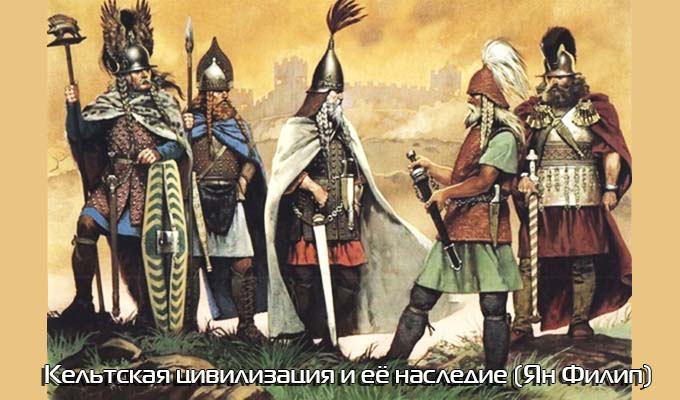
In the interior of the Celtic world, in the Rhineland and in the Czech lands we did not find in the Laten period temples and shrines of this kind, as in the south of France. There is only evidence of the existence of the sacred places of religious nature, limited by a fence, a ditch or shaft, in most cases very simple. Often it was just a piece of land, on which there was a grove of sacred trees or a certain tree, and sometimes just call or post. There were some sacred forests and mountains, “loci consecrati”, the sacred place where the Celts brought to the gods, as we reported Caesar himself. It is necessary to bear in mind the old traditions and customs, which are deducted from previous times. In Kobener Wald between Koblenz and Mayne was discovered round playground (Goloring) with a diameter of over 200 meters, surrounded by a moat and an inner shaft; in the central part of the sublime was Posthole, which originally was a wooden pillar, apparently, is quite high. Burial on site was not, but in the middle of it and in the moat galshtattskie shards were found. These objects do not yet have many analogies to systematically open. In 1959, the Institute of Archeology of the Czechoslovak Academy of Sciences have discovered under the guidance of Rybovoy in Libenitsah Colin in the middle of the Czech Republic Oval cult object of length greater than 80 m (80 X 20 m), limited by a moat. In the eastern half of the object was a system of wells with wide stone stele, partly artificially hewn, and in front of it an oval base of a sacrificial table made up of large stones. In view of the fact that next to him traces of wood and two cervical hryvnia wire were found, you can assume that the hryvnia at the time were on a wooden pole (or poles), and religious rituals were performed around this character. Many animal bones also speaks of the sacrifices. Ceramics found in this place (mainly crockery) refers to galshtattsko-La Tene time around for ages 4-3. In the second half of the cult site was found the core of women belonging to about 3 century, with burial items Celtic character to the La Tene bronze brooches with a free heel, with rings and bracelets. This is the second object of the cult character in the Czech Republic. In the first, in Mshetskih Zhehrovitsah it appears later, was found the head of the hero. We must not forget that in the La Tene, the role of the divine power of the character also played neck hryvnia highly artistic works. Silver torkves of Trihtingena in Germany (. Table XXII, iron base), a brilliant celtic work around the 2nd century BC, weighs 6.75 kg and use it as a neck hryvnia is unlikely; probably he was hanging on some wooden post or idol. In Frilforde in Berkshire was opened the place with six large holes columnar extending in two parallel rows; Iron opener was intentionally put on the bottom of the column; to reconstruct the whole area has not been possible. Judging by the found in burials fibula, we can speak of the La Tene period of time and Gallic-Roman. In Ekyuri-le-Repos were at the center of a fenced area four pole-holes arranged in a square, with a large hole in the middle; it is possible that there once was a covered structure with the sacred pole or the image of God. The aforementioned Celt head with torkvesom found in Mshetskih Zhehrovitsah, was discovered in a pit located on a rectangular area of 200 X 105 meters with a bulk shaft, divided in additional shafts into three parts; no doubt that here was a place of worship. Some of the trees were endowed with divine qualities, or even magical power. Evidence of this are in the later Roman inscriptions or texts in Irish. They referred to the gods of oak and beech (deus fagus – beech god, deus sex arbores – god of the six trees, deus robus – oak god and others.). According to Maximus of Tyre oak trunk served as the Celts as a statue of Jupiter. In Ireland, there are references to the sacred tree (bile) and some personal and tribal names indicate the same connection (Irish Mac Ibar, son of yew, the name of Eburones contains the name of the yew, Gallic name Guidgen is probably the son of a tree, a forest or alder). Some Celtic sacred places were associated with burials or perhaps burial of prominent persons served basis sanctity of these places. We know belongs to the early period of the stone to Württemberg Shtokkaha associated with cremation under the mound. In the north-eastern France on the Marne there are grounds, surrounded by a quadrangular moat serving platitudes burial for certain birth. The custom build circle (moat) around the burial mound or around the whole was fairly common since the Bronze Age, and survived in galyntattskoe and La Tene time. This does not mean, however, that all the Celtic church was essentially fenced grave of a hero. In toponymy in almost all the Celtic world widely nemeton word ,, “which probably also has a connection with the sacred place. “Nemeton” in all probability, a Celtic sanctuary, it was not always the building: often, apparently, it was only a sacred grove. In the north-western part of the Iberian Peninsula is mentioned Nemetobriga the territory atrebates in northwestern Gaul Nemetakum in Asia Minor region – Drunemeton as a place of meeting of the Gauls; Britain was Vernemeton in southern Scotland – Medionemeton. In Ireland, according to Powell, “fidnemed” meaning sacred forest, Latin glosses attached to the word “Nemeth” word saslleum, a fence, a place of worship. Author glosses 8th century known word ,, nimidas “- a sacred place in the forest or grove. More recent records also speak about the forest Nemeth, and according to the testimony of ancient writers, druids often made sacrifices and rituals in the woods. In Switzerland, even in the Roman period worshiped the gods of the mountains and rivers. Quadrangular sacred objects from the mounds, in all probability, are the precursors of Celtic sanctuaries that under Roman influence become a quadrangular building, often surrounded by a colonnade or a fence. Gallic-Roman sanctuary of this type, rectangular and circular, sometimes located on the hilltops; of which we mention below. A very revered sacred springs, springs, creeks and some swamps and peat bogs, as described in ancient times mentions Posidonius.





Leave a Reply